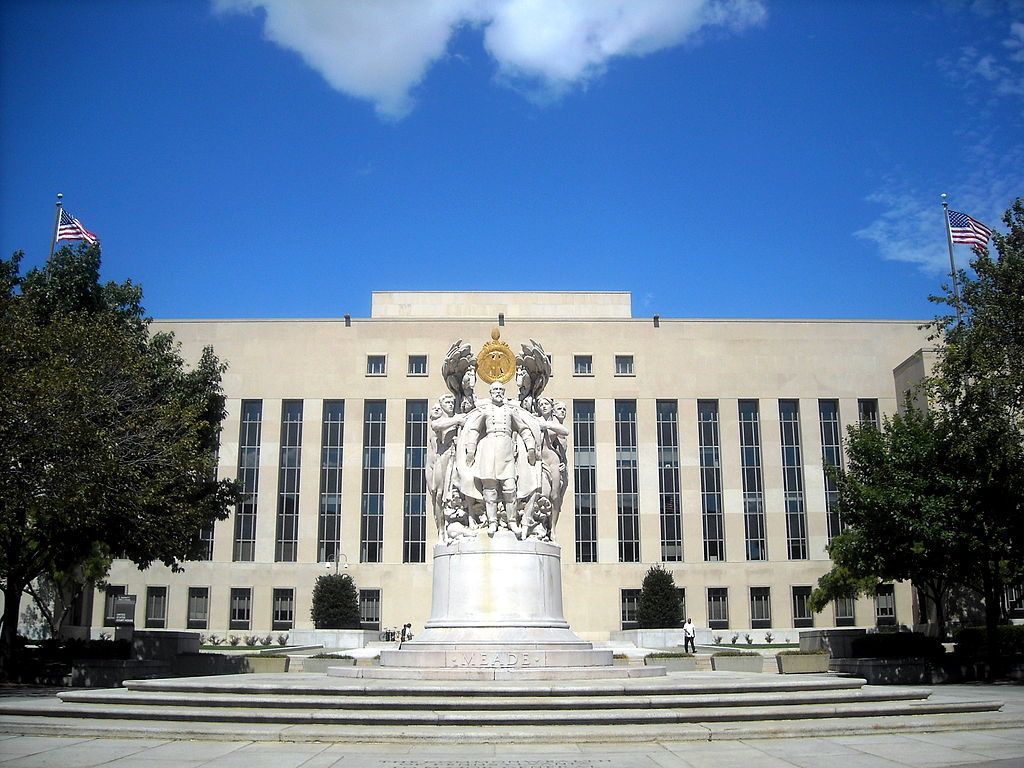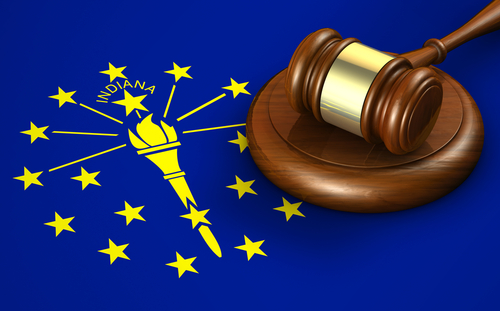Full DC Circuit reinstates order requiring government to allow teen immigrant to get an abortion

E. Barrett Prettyman Federal Courthouse in Washington, D.C., home of the U.S. Court of Appeals for the District of Columbia Circuit. Photo by AgnosticPreachersKid, via Wikimedia Commons.
An en banc federal appeals court has reinstated an order requiring the U.S. government to allow an abortion for a 17-year-old immigrant who is being held in a federally funded Texas shelter because she is in the country illegally.
The U.S. Court of Appeals for the District of Columbia Circuit issued a 6-3 order (PDF) that overturned an Oct. 20 decision by a D.C. Circuit panel that had delayed the abortion, report Politico, BuzzFeed News and Reuters.
The earlier, 2-1 panel decision had made it possible for the girl to have the abortion without government involvement because it allowed time to find a sponsor who could allow for the girl’s abortion.
Judge Patricia Millett had dissented from the Oct. 20 panel decision. She wrote a concurring opinion that supported the en banc court decision issued Tuesday.
“Fortunately, today’s decision rights a grave constitutional wrong by the government,” Millett wrote.
The girl, identified only as Jane Doe, had gotten a judge’s approval for the abortion and had complied with the legal requirements of state law. She had secured funds to pay for the abortion. The search to find and vet a sponsor, a process that is typically “anything but expeditious,” has already lasted seven weeks, Millett said. The panel decision set an Oct. 31 deadline to find a sponsor and didn’t allow for an abortion if none could be found by that date, according to Millett.
The government had never argued that the girl’s status as an accompanied minor who entered the United States without documentation eliminated her constitutional right to an abortion, Millett pointed out. “Where the government bulldozed over constitutional lines,” she wrote, was its position that the girl had “the burden of extracting herself from custody if she wants to exercise the right to an abortion that the government does not dispute she has.”
“The government has insisted that it may categorically blockade exercise of her constitutional right unless this child (like some kind of legal Houdini) figures her own way out of detention” by returning home “to the abuse from which she fled” or by finding a sponsor, Millet said. “That is constitutionally untenable, as the en banc court agrees.”
Judges Brett Kavanaugh, Karen LeCraft Henderson and Thomas Griffith dissented. Kavanaugh’s dissent was joined by the other two justices, although Henderson also wrote separately.
Kavanaugh said the en banc majority “has badly erred in this case.” The majority decision, he wrote, “is ultimately based on a constitutional principle as novel as it is wrong: a new right for unlawful immigrant minors in U.S. government detention to obtain immediate abortion on demand, thereby barring any government efforts to expeditiously transfer the minors to their immigration sponsors before they make that momentous life decision. The majority’s decision represents a radical extension of the Supreme Court’s abortion jurisprudence.”
The case returns to the trial court to set a new deadline for the government to comply.



